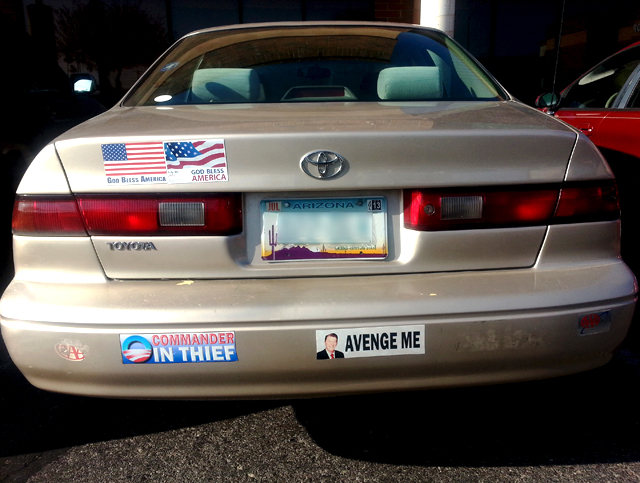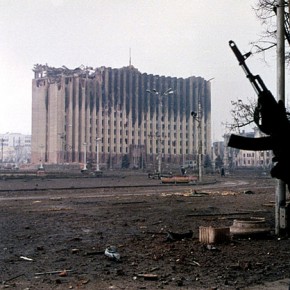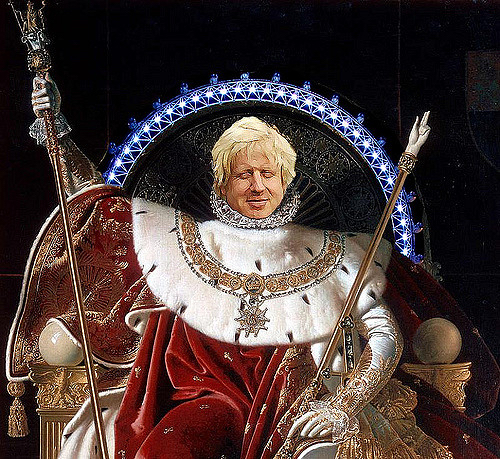Margaret Thatcher provoked the same passionate responses in death as she did when she was Prime Minister. It’s hard to imagine a Briton being on the fence about her. That was once true for her American counterpart Ronald Reagan as well. But he fared much better than Thatcher in retirement. Both because of sexism and the suspicion that, despite his fiery anti-statist rhetoric, he was deep down a “softie” — something no one ever accused the Iron Lady of being — by the time of his passing he had transformed into the sort of national figure whom it’s political suicide to attack.
To be sure, conservatives are most likely to invoke Reagan’s legacy. Yet his posthumous significance is so great that even hardcore progressives have been circulating quotations from him — about government programs such as Medicare, the separation of church and state, even international diplomacy — to reinforce their own positions. Indeed, the political mainstream in the United States has shifted so far to the right since the 1980s that this exercise is fairly easy.
Nevertheless, there’s a big difference between using Reagan this way — reading him against the grain, if you will — and elevating him to the status of a non-partisan icon. While he may one day end up gracing a coin or bill, he has yet to be drained of his ideological significance in the way that Martin Luther King Jr. has. Back in the 1980s, plenty of Republicans balked at making King’s birthday a national holiday, most notoriously in the state of Arizona, which refused to recognize it even after it had picked up Federal backing. Today, by contrast, you’d be hard pressed to find anyone willing to challenge King’s quasi-deification. Reagan may end up similarly “denatured”, but it will take a while.
The bumper stickers on this car reflect this transitional status. Its owner clearly belongs to the ranks of the committed conservatives who believe that the mainstream media is biased against their worldview and must be countered by any means necessary. Since President Barack Obama’s election in 2008, this sector of the population has sustained a cottage industry in stickers deriding him as a defender of Big Government intent on depriving them of their liberty and, more specifically, their tax dollars and guns. From the simple-yet-elegant “Nobama” graphic that mirrors the President’s official campaign literature to more strident declarations of his dangerousness — like this one or this one — these acts of resistance seemingly testify to the widening ideological gap in the United States.
If this car were merely festooned with the “Commander in Thief” sticker, then, it wouldn’t be worthy of commentary. In states like Arizona, so many cars bear this sort of message that it no longer makes much of an impression. What sets this vehicle apart is the dialogue it creates between that anti-Obama sentiment and the sticker featuring a smiling Ronald Reagan that reads “Avenge me.” The implication is that the President has managed to undo the so-called “Reagan Revolution”, which, like the one Margaret Thatcher presided over in Great Britain, is credited with ushering in an era of leaner and, yes, meaner national government.
Despite some dramatic moves akin to Thatcher’s, such as the firing of striking air traffic controllers, Reagan’s bark was worse than his bite. With the Democrats, led by the fiery Tip O’Neill, still possessing a majority in the House of Representatives, it was difficult for the Republicans to push their agenda through. But one also gets the sense, in retrospect, that Reagan didn’t try as hard as he could have to turn his rhetoric into reality. Certainly, even though his two terms saw cuts to social services, including the mass release of mental patients that exacerbated the nation’s homeless problem, the Federal government did not really shrink.
It wasn’t until President Bill Clinton had to contend with a Republican Congress in the 1990s, while also grappling with the military possibilities of the Post-Cold War era, that Reagan’s vision for America became a reality. Ironically, Clinton proved to be a more successful instrument of conservative ideology than his predecessors in office, though circumstances may have forced his hand. But you would never see the “Commander in Thief” sticker alongside one advocating vengeance for Clinton, because the vast majority of the American public still regards him — like Obama — as very liberal, if not outright socialist.
Truth be told, the person most responsible for breaking with Reagan’s “small is beautiful” philosophy was George W. Bush, who presided over an astonishing expansion of the Federal government in the wake of 9/11 and the two wars it spawned. There was a reason that Republican candidates for President in 2012 barely mentioned Bush in the course of their interminable campaign, while dropping Reagan’s name at every possible opportunity.
Democrats complain Obama keeps getting blamed for a mess he did not create. While they have a point, however, it is becoming increasingly obvious that the President has no desire — and perhaps never did have one — to break with many Bush Administration policies, from detaining “enemy combatants” at Guantanamo Bay to authorizing military strikes without a formal declaration of war, to promoting major changes to Social Security and Medicare.
Whatever their superficial differences, in other words, Presidents “43” and “44” have a lot in common with each other. . . and with “40” — Ronald Reagan — for that matter, since they all sought to increase the power of the White House, even if it meant sacrificing democratic process to do so. Vengeance is theirs, in other words, not on the defenders of Big Government, but the forces which, in the wake of Watergate and Vietnam, tried to curb the Presidency.
Commentary and photograph courtesy of Charlie Bertsch.






reagan was scum, trickle down econmomics are a lie they benefit only the rich, his presidency should have ended with him in prison